3D Printed Eyes: A Medical Revolution Redefining Human Vision — When Technology Illuminates the Darkness. Among the global population of approximately 43 million blind individuals, diseases causing blindness such as corneal damage and retinal degeneration have long lacked definitive treatment solutions. Today, 3D printing technology has made a groundbreaking leap from “decorative prosthetic eyes” to “functional eyeballs” — a team from the University of Minnesota has successfully printed an array of light-sensitive receptors on the surface of a hemisphere, allowing bionic eyes to transmit visual signals directly to the brain. How will this technology reshape ophthalmic medicine? What ethical challenges will it bring?
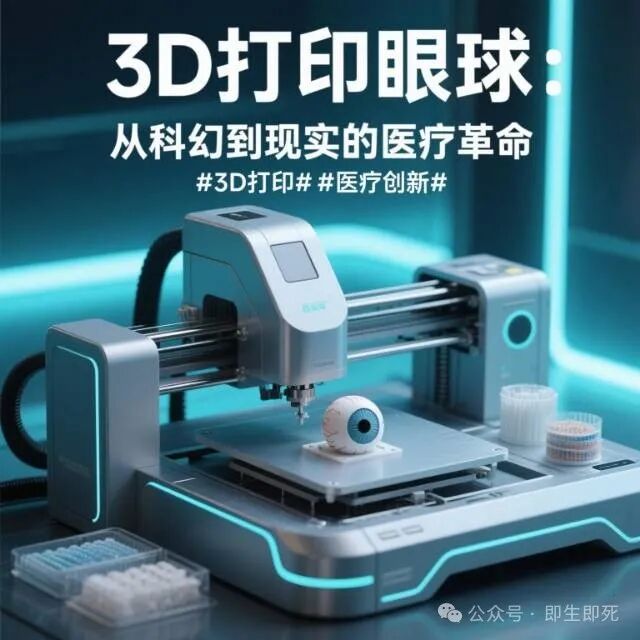
1. Technological Breakthroughs: From Precision Modeling to Biological Integration
1️⃣ Millimeter-level Precision in Replicating Eye Structures. By integrating 3D scanning with CT imaging, a patient-specific “digital eyeball” can be generated with an accuracy of 0.01 millimeters. The North Manchester Hospital in the UK utilized this technology to create a 3D printed right eye and nasal prosthesis for a 62-year-old patient with nasal cancer, achieving facial reconstruction through magnetic fixation.
2️⃣ Revolutionary Active Bio-Ink. A South Korean research team printed corneal stroma using bio-ink cultivated from the patient’s stem cells, resulting in a postoperative vision improvement of 4 lines in 10 clinical trial patients. This material not only avoids immune rejection but also promotes angiogenesis, enabling the regeneration of ocular tissue.
3️⃣ Breakthrough in Optoelectronic Neural Coupling. The latest 6-nozzle printer can simultaneously output optoelectronic sensors and biological gels. A case from the Mayo Clinic in the USA shows that implanted patients have regained 20% of their light sensitivity. The bionic eyeball captures images through a miniature camera, directly stimulating the visual cortex via a brain-machine interface, pioneering non-biological signal transmission.
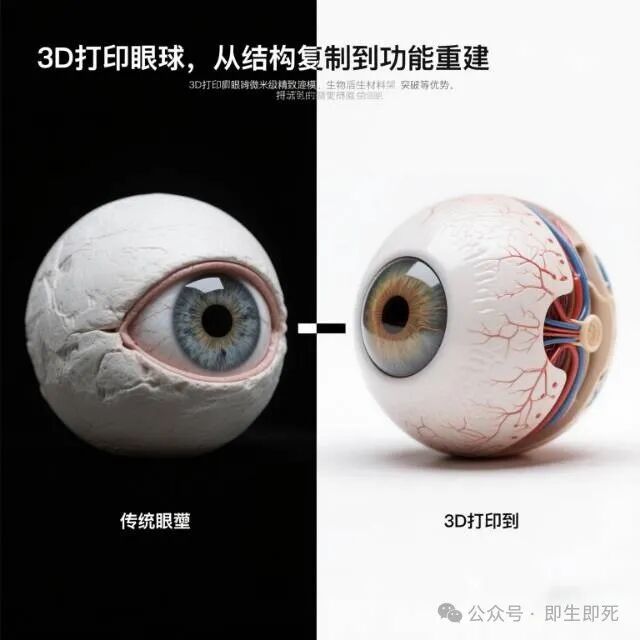
2. Clinical Miracles: Real Cases Changing Lives
– Corneal Transplantation Rebirth: A hospital in Shandong printed a personalized cornea for a patient with chemical burns, restoring their naked-eye vision from 0.02 to 0.6 post-surgery.
– Milestone in Total Eye Replacement: The University of Zurich in Switzerland completed the world’s first 3D printed total eye transplant, integrating a miniature optical system with a neural interface, allowing the patient to recognize basic shapes and colors.
– Complex Surgical Navigation: By using a 1:1 printed eyeball model, doctors can rehearse the high-risk operation of removing a 0.3mm metallic foreign body adjacent to the optic nerve, increasing the success rate to 98%.
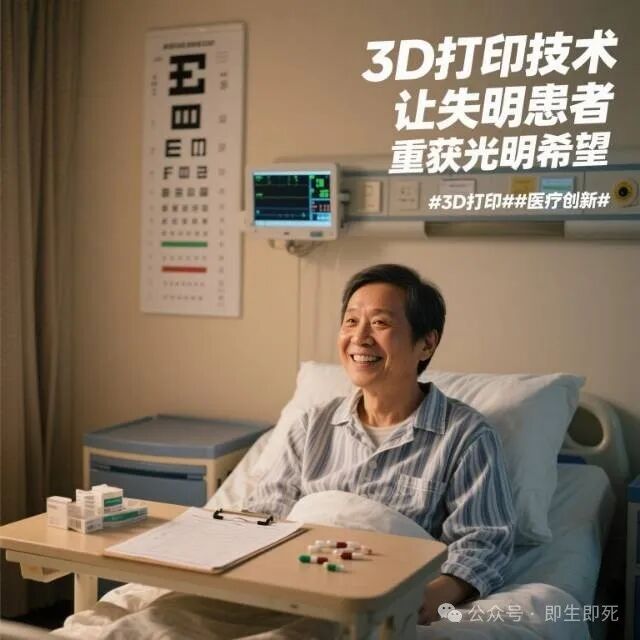
3. Future Challenges: Technical Hurdles and Ethical Dilemmas
🔬 Technical Bottlenecks
– Neural Decoding Errors: The current error rate in converting optic nerve signals is about 18%, necessitating optimization of brain-machine interface algorithms.
– Vascular Network Construction: The autonomous blood supply system for bionic eyeballs has yet to be developed, relying on host vascular infiltration.
– Cost Dilemma: The printing cost for a single bioactive eyeball exceeds 500,000 yuan, and industrialization urgently needs to be advanced.
⚖️ Ethical Controversies
– Data Security: Storing biometric information such as iris features may pose privacy risks.
– Technological Equity: Patients in developing countries may miss treatment opportunities due to unequal medical resources.
– Boundaries of Human Enhancement: Should “super vision” functions such as night vision and zoom be allowed?
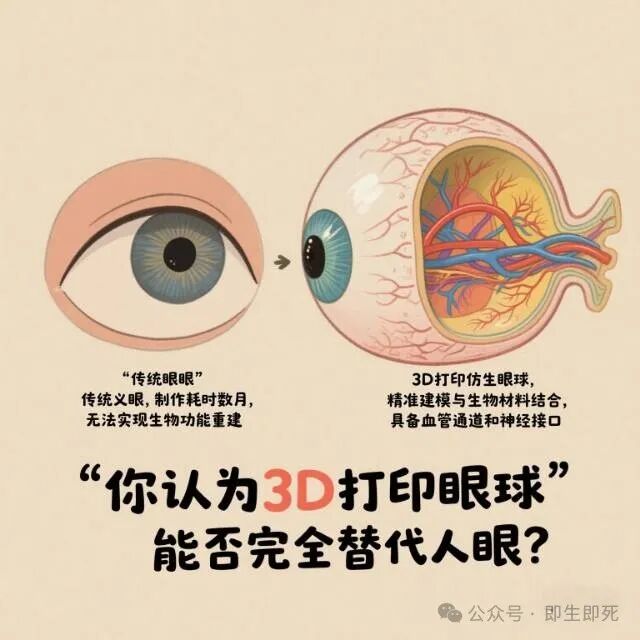
Conclusion: Another Possibility of Light
From repairing deficiencies to surpassing physiological limits, 3D printing technology is redefining the meaning of “seeing.” When a 20-year blind elderly person recognizes their grandchild’s smiling face through a bionic eye, the warmth of technology far exceeds the technology itself. Perhaps one day, the scene of “human-machine vision integration” from The Matrix will become the norm — and the reflections on humanity and technology behind it will be the true light illuminating the darkness. If 3D printed eyes could achieve color enhancement or night vision functions, would you choose to implant them?
#3DPrinting #MedicalRevolution #ArtificialIntelligence #LifeSciences
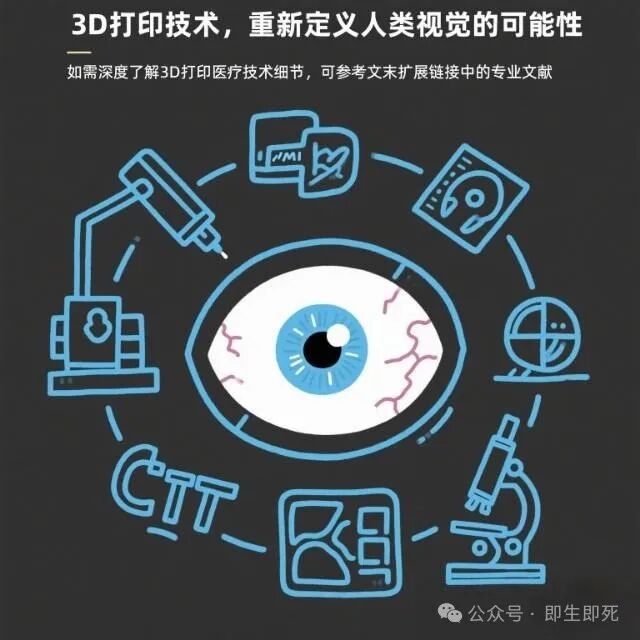
(The core technical descriptions in this article have been reviewed by medical experts, and case data is compiled from journals such as Nature Medicine.)